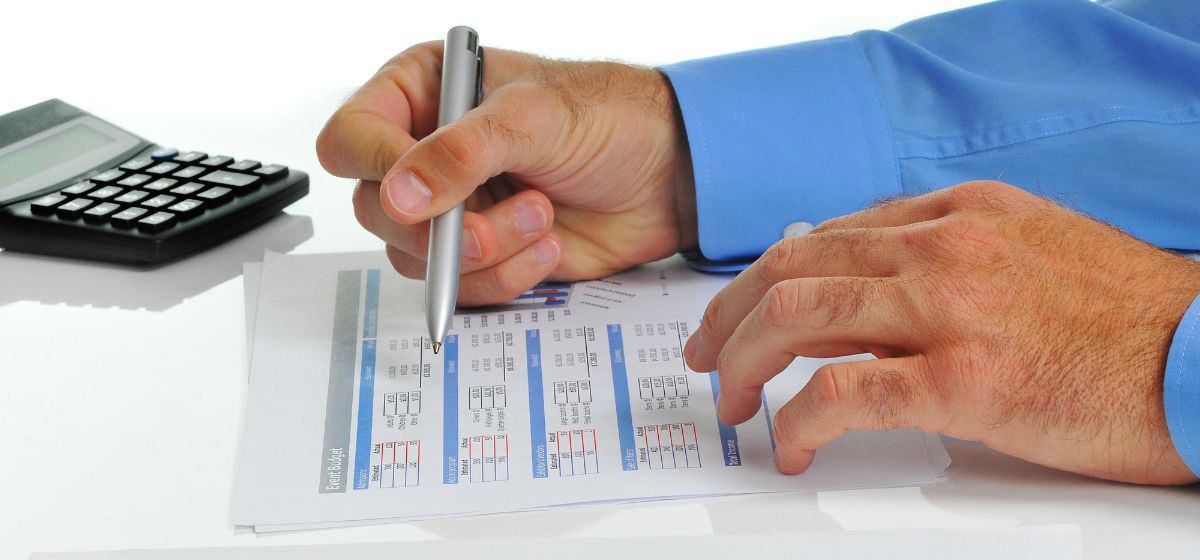A balance sheet is a financial statement used by a company to report its assets, liabilities, and shareholder equity at any specific time. Investors use balance sheets to compute the rates of return and evaluate a company’s capital structure. The balance sheet provides a quick snapshot of what a company owes and owns. They are used alongside other essential financial statements for conducting analysis or calculating financial ratios.
Balance sheets have two primary sections. The first section outlines the company’s assets. Usually, liquid assets such as cash are placed near the top, and less liquid assets like property are placed at the bottom. The second section is liabilities, which includes money owed on loans or credit cards. The liabilities are added up, and the balance sheet will indicate a “Total Liabilities” calculation.
Following the liabilities section is an equity section. This is calculated by finding the difference between assets and liabilities. A positive result demonstrates equity in the business. In other words, if you choose to sell the business today, you should walk away with a little extra cash.
Accounting professionals first determine a reporting date and period to prepare a balance sheet. Then, they will identify and list the assets as of the specified date. Assets include current assets like cash, accounts receivable, and inventory. Non-current assets include property, intangible assets, and goodwill. The current and non-current assets are totaled together. Then, the accountant must identify liabilities. Current liabilities include accounts payable, deferred revenue, and accrued expenses. Non-current liabilities may include deferred revenue, long-term debt, and long-term lease obligations. Liabilities are then totaled together.
Once the assets and liabilities are totaled, an accountant calculates the shareholder’s equity. This includes common, preferred, and treasure stock along with retained earnings. The liabilities and shareholders’ equity are combined and compared to the company’s assets.
What is a Balance Sheet?
A balance sheet is a financial statement for a company. It contains the company’s assets, liabilities, debt, equity capital, etc. It provides a glance at all the company’s financial business. On a balance sheet, the assets are listed on one side and the liabilities on the other. For the balance sheet to properly reflect a company’s financial health, both the liabilities and assets should be tallied. In other words, the assets should be equal to, or greater than the liabilities plus the equity. Balance sheets are usually calculated after each quarter, six months, or year. It provides a snapshot of the current financial status of a business.
What is the Function of a Balance Sheet?
The function of a company’s balance sheet is to provide a snapshot of its financial status. It includes assets, liabilities, and equity at a specific time. It sums up what the company owns, what it owes, and how much the business is worth at that time. The balance sheet sums up information that can serve as a valuable tool for lenders and investors to use to assess the overall financial status of a company. A balance sheet is not difficult to understand, as long as a person knows how each part functions and the roles the part play in providing a solid picture of the finances of a company.
What are the Components of a Balance Sheet?
Let’s take a look at the main components of balance sheets. The main components are assets, liabilities, and the equity of the shareholders. In some instances, businesses add other relevant information as it pertains to the nature of their business.
| Assets | Assets are anything of value owned and controlled by the company. They can be tangible such as a building, cash, or inventory. Or they may be intangible, such as invoices, goodwill, or leased machinery. |
| Liabilities | Liabilities are non-ownership claims against the business or obligations that must be satisfied. |
| Shareholder Equity | The owner or shareholder equity includes things like investments, dividends, net income, or losses. Owners’ equity is against the business and not their assets. |
Where is the Balance Sheet Used?
Businesses use balance sheets for a variety of purposes. Firstly, balance sheets provide an accurate snapshot of the financial position. Income statements, cash flow statements, and a balance sheet are used periodically throughout the year to evaluate a company’s financial standing.
Secondly, a business can use balance sheets for competitor analysis to see how they compare to other businesses in their industry. A balance sheet is often used to determine which financial habits need to be adjusted to increase competitiveness.
Thirdly, balance sheets are used annually for a financial health assessment. The balance sheet tracks the company’s performance, including how well your company meets its financial obligations. Additionally, it allows for comparing former balance sheets to discover how a company has performed over time. For instance, have assets increased? Or has it accumulated more debt?
Lastly, a balance sheet is used periodically by potential or present investors if they need to assess a company’s net worth. Investors use balance sheets to calculate financial ratios, which determine a company’s financial standing.
How Do You Make a Balance Sheet?
Making a balance sheet follows a specific process, although some elements may change depending on the details of a company. Here are the steps to making a balance sheet.
- Choose the Balance Sheet Date: Balance sheets show all the assets, liabilities, and shareholders’ equity of a business on a certain day of the year or at a definite time. In most cases, companies prepare financial reports quarterly. However, some companies choose to prepare their monthly balance sheets on a specific day each month.
- List all Business Assets: Once the balance sheet date is set, all the current assets are listed as separate line items. Separating them in order of liquidity makes this step a bit easier. Liquid items like accounts receivable and cash are listed first, and less liquid assets like inventory are listed last. Once all the current assets are listed, then the non-current assets are listed. It’s important to note that non-monetary assets are listed as well.
- Add up all the Assets: After all the assets are categorized and listed, add them up. The final tally is the total assets. Double-check the final figure against the general ledger.
- Identity and List Current Liabilities: List all the company’s current liabilities. They should be due within one year of the date of the balance sheet. Liabilities include short-term notes payable, accrued liabilities, and accounts payable.
- Calculate the Long-term Liabilities: List all liabilities that will not be settled within 12 months. These will include long-term notes, pension plans, mortgages, and bonds payable.
- Total All Liabilities: Add the subtotal of current liabilities with the long-term liabilities subtotal to calculate the total liabilities for the company.
- Determine the Owner’s Equity: This step involves determining the retained earnings, working capital, and shareholders’ equity. Retained earnings are profits that are not redistributed to shareholders but instead are saved for reinvestment purposes. The shareholders’ equity is determined by combining the share capital and retained earnings.
- Add Owner’s Equity and Liability: When liabilities plus equity equals the company’s assets, the balance sheet has been done correctly. If it doesn’t, then review the work to ensure there are no mistakes.
When Should You Prepare Your Balance Sheets?
Since a balance sheet provides a snapshot of a business’s financial health at any point, they can be created when needed. However, for most businesses, balance sheets are prepared at the end of accounting periods, such as the end of the month, the end of the quarter, or the year’s end. New business owners shouldn’t wait too long to prepare a business sheet. A balance sheet is used by business owners as a strategic tool when making business decisions.
Why Do Businesses Create a Balance Sheet?
A balance sheet is essential for a business that needs to get a picture of its financial standing. The financial statement shows what is owned (assets) and what is owed (liabilities). It also shows how much equity has been invested in the company. These bits of information become more valuable when balance sheets are prepared for several consecutive periods.
Businesses have many reasons to create balance sheets. They are helpful for providing an understanding of the organization’s short-term financial status. They make it easy for a firm to assess if there are sufficient funds to pay off short-term obligations. They also create balance sheets to determine their borrowing level and their ability to pay dividends.
Who Needs to Submit a Balance Sheet?
An accountant needs to keep updated copies of all financial records for a business, including the balance sheet. For most companies, like S Corps, the balance sheet is useful for filling out financial information on taxes. If an S Corp has total assets of $250,000 or more, the balance sheet information is required for completing the Schedule L section.
For the purposes of income taxes, only C corporations are required to submit a completed balance sheet with their returns each year. The balance sheet is submitted to the IRS so they can determine if the balance sheet (included with Form 1120) matches the corporation’s records and books.
What are Balance Sheets’ Limitations?
The balance sheet does have some limitations that can affect the decision-making process. One limitation is that fixed assets do not reflect the asset’s original value when showing depreciation. Secondly, fixed assets are assigned a book value on balance sheets, which is unrelated to market value.
In some instances, items such as discounts, debentures, and loss on shares are shown on a balance sheet as assets. Including them as assets will inflate the value of total assets. Also, the current assets’ value depends largely on estimates, which do not reflect the financial position of the business accurately.
Lastly, a balance sheet cannot accurately represent non-monetary items that bring value to the company. Items without monetary value include skilled labor, intelligence, and worker loyalty.
What is the Limitation of Profit and Loss Statement and Balance Sheet?
The profit and loss statement is just one portion of a balance sheet. A balance sheet in its totality gives a general picture of the financial health of a business. The profit and loss statement provides an incomplete picture and should not be used alone to make business decisions without considering other portions like the cash flow statement.
Another limitation of the profit and loss statement rests with businesses that report too often. With automated and computerized accounting systems, the profit and loss statement can be printed at any time. Generating this report too frequently can give managers an unrealistic picture of the financial position of the business since the data sample is not large enough.
What Happens if the Balance Sheet isn’t Right?
Accountants prepare balance sheets for businesses of all sizes. No matter what the size, accounting errors can occur that affect the balance sheet. Usually, they are legitimate mistakes. Some of the most common mistakes on balance sheets include incorrectly classifying data, data entry errors, and omitting key information. Errors are going to happen due to the large amount of financial information required for creating a balance sheet.
When the balance sheet is not correct, errors must be found. If they are not corrected, it can create a long-term problem for the business. Digital copies of all financial documents can be scanned to determine where the error lies. The sooner errors are discovered, the sooner they can be corrected without impacting the financial future of the company.
What is the Impact of Inventory on the Balance Sheet?
Inventory impacts both income statements and balance sheets. The valuation of inventory is considered a current asset in accounting. It is expected that inventory will be moved or sold within the next 12-month period. Inventory information on balance sheets can be used to determine how well a company moves inventory by selling and replacing it over time.
How Does Depreciation Affect the Balance Sheet?
What is Depreciation? Depreciation is reported on the balance sheet and helps provide a complete picture of how assets depreciate over time. Depreciation expense balances out the depreciation expense on the balance sheet. Depreciation expenses decrease assets. The accumulated depreciation holds a value so that the depreciation expense on the balance sheet remains negative, balancing it out.
Is a Balanced Balance Sheet Required?
Yes. A balance sheet should always be balanced because each transaction impacts both sides. The balance sheet shows where the money came from as well as what it was used for. If the double-entry accounting process was done correctly, the balance sheet will balance and make it easier to analyze the report.



